Netgear ProSafe WAC740 Handleiding
Netgear
Access point
ProSafe WAC740
Bekijk gratis de handleiding van Netgear ProSafe WAC740 (2 pagina’s), behorend tot de categorie Access point. Deze gids werd als nuttig beoordeeld door 68 mensen en kreeg gemiddeld 4.6 sterren uit 34.5 reviews. Heb je een vraag over Netgear ProSafe WAC740 of wil je andere gebruikers van dit product iets vragen? Stel een vraag
Pagina 1/2

Installation
NETGEAR ProSAFE Dual Band Wireless AC
Access Point
WAC740
Set Up the Access Point
Before mounting the access point in a high location, first set up and test the
access point to verify WiFi network connectivity.
IMPORTANT: You can deploy the WAC740 access point only in a WiFi
network that is managed by a ProSAFE wireless controller.
¾To cable the access point:
1. Connect an Ethernet cable from LAN port 1 on the access point to a
LAN port on a PoE+ switch, that is, an 802.3at-compatible switch.
2. Connect an Ethernet cable from the PoE+ switch to an Ethernet port on
the computer.
3. Check the LEDs to verify that the access point is set up correctly.
LED Description
Power LED
•O. Power is o.
•Solid green. Power is on.
•Alternating green and amber. The access point is receiving insucient
PoE power.
•Solid amber, then blinking amber. A self-test is running or firmware is
being loaded. During startup, the Power LED first lights solid amber, then
goes o, and then blinks amber before turning solid green aer about
one minute. If aer two minutes the Power LED remains solid amber or
continues to blink amber, it indicates a system fault.
Activity LED
•O. No link with the network is detected.
•Solid green. A link with the network is detected.
•Blinking green. Network trac is detected.
Package Contents
Unpack the box and verify the contents:
• WAC740 ProSAFE Dual Band Wireless AC Access Point
• Category 5e Ethernet cable
• Ceiling mount kit
LED Description
LAN LED 1
•O. A 10 Mbps Ethernet link is detected or no Ethernet link is detected.
•Solid green. A 2.5 Gbps Ethernet link is detected.
•Solid amber. A 1 Gbps or 100 Mbps Ethernet link is detected.
If both LAN LED 1 and LAN LED 2 light solid green or amber, the LAN ports
are members of a link aggregation group (LAG).
LAN LED 2
•O. No LAG is detected.
•Solid green. A LAG with a 2.5 Gbps Ethernet link is detected.
•Solid amber. A LAG with a 1 Gbps or 100 Mbps Ethernet link is detected.
If both LAN LED 1 and LAN LED 2 light solid green or amber, the LAN ports
are members of a LAG.
2.4G WLAN LED
•O. The 2.4 GHz WiFi radio is o.
•Solid green. The 2.4 GHz WiFi radio is on.
•Blinking green. WiFi activity is detected on the 2.4 GHz WiFi radio.
5G WLAN LED
•O. The 5 GHz WiFi radio is o.
•Solid green. The 5 GHz WiFi radio is on.
•Blinking green. WiFi activity is detected on the 5 GHz WiFi radio.
The access point uses a DHCP client that is enabled by default. If your network
includes a DHCP server, the access point obtains an IP address from the DHCP
server. If your network does not include a DHCP server, the access point sets
its IP address to a static IP address of 192.168.0.160.
If your network includes a DHCP server, note the following:
• Make sure that Option 43 is enabled on the DHCP server.
• Make sure that the DHCP server specifies the IP address of the wireless
controller in the required hexadecimal format in the Option 43 field.
For example, if the IP address of the wireless controller is 192.168.0.250,
you must enter the hexadecimal string 02:04:C0:A8:0:FA.
To compose the address, start with 02:04: and then add each of the four
address octets in hexadecimal format, separated by colons.
The first two octets (02:04) define a standalone NETGEAR wireless
controller, or in a stack, the first wireless controller in the stack.

July 2016
© NETGEAR, Inc., NETGEAR and the NETGEAR Logo
are trademarks of NETGEAR, Inc. Any non‑NETGEAR
trademarks are used for reference purposes only.
NETGEAR, Inc.
350 East Plumeria Drive
San Jose, CA 95134, USA
NETGEAR INTL LTD
Building 3, University Technology Centre
Curraheen Road, Cork, Ireland
To specify the second wireless controller in the stack, enter the first two
octets as 02:08. To specify the third wireless controller in the stack,
enter the first two octets as 02:0C.
The remaining four octets specify the IP address in hexadecimal format.
• We recommend that you reserve an IP address for the access point on
the DHCP server.
If your network does not include a DHCP server, configure a computer with
a static IP address of 192.168.0.210 and a subnet mask of 255.255.255.0
so that you can connect to the access point at IP address 192.168.0.160.
¾To verify that the access point obtained IP address information,
or if your network does not include a DHCP server, to configure
the access point’s IP address information:
1. Open a web browser from a computer that is connected to the same
network as the access point or to the access point directly through an
Ethernet cable.
2. In the address bar, enter the IP address of the access point.
The default IP address is .192.168.0.160
A login window displays.
3. Enter the user name and password.
The user name is . The default password is admin password. The user
name and password are case-sensitive.
4. Select Configuration > System > Basic > Network Settings > IP
Settings.
5. Verify or configure the IP settings for your network.
6. Select Configuration > System > Network Settings > Controller
Settings.
7. Verify or configure the IP address for the wireless controller in the
network.
For more information, see the ProSAFE wireless controller user manual.
Problem Cause Possible Solution
No LEDs are lit
on the access
point.
The access point
is receiving no
power.
•Make sure that the access point is securely connected to a PoE+ switch.
•Make sure that the PoE+ switch is connected to a power source.
The Power
LED alternates
green and
amber.
The access point
is receiving
insucient PoE
power.
•Make sure that PoE+ switch is not overloaded.
•If you connected the access point to a PoE (802.3af) switch, disconnect
it and connect it to a PoE+ (802.3at) switch instead. The access point
requires a PoE+ (802.3at) switch.
The LAN port
LEDs are o.
A hardware
connection
problem exists.
•Make sure that the cable is connected to LAN port 1 (the PoE port) on
the access point. (LAN port 2 active only when a LAG is enabled.)
•Make sure that the cable connectors are securely plugged into the
access point and switch.
• Make sure that the switch is turned on.
The WLAN
LEDs are o.
The wireless
connection does
not work.
•Make sure that the PoE+ switch is providing sucient power to the
access point.
•From the wireless controller, verify that the radio or radios are turned on.
•If the WLAN LEDs remain o, contact NETGEAR.
You cannot
connect to
the access
point from a
browser.
Multiple
possible causes.
•Make sure that your computer is using an IP address in the same
range as the access point. The access point default IP address is
192.168.0.160, and the default subnet mask is 255.255.255.0.
•Quit the browser, clear the cache, delete the cookies, and launch the
browser again.
Support
Thank you for purchasing this NETGEAR product. You can visit
www.netgear.com/support to register your product, get help, access the latest
downloads and user manuals, and join our community. We recommend that you
use only ocial NETGEAR support resources.
For more information about the installation options, visit
www.netgear.com/support to access the hardware installation guide.
For the current EU Declaration of Conformity, visit
http://support.netgear.com/app/answers/detail/a_id/11621/.
For regulatory compliance information, visit
http://www.netgear.com/about/regulatory/.
See the regulatory compliance document before connecting the power supply.
¾To let the wireless controller discover the access point:
1. Access the wireless controller at its network IP address.
2. Select Access Point > Discovery Wizard.
3. Follow the steps onscreen to discover the access point and review the
discovery results.
4. In the table with discovered access points, select the check box for the
access point, and click the button.Add
The access point is added to the Managed AP List and is now ready for
further configuration and management by the wireless controller.
For more information, see the ProSAFE wireless controller user manual.
Deploy the Access Point
The best location for the access point is elevated, such as mounted on a
wall or ceiling, at the center of the WiFi coverage area, and within line of
sight of all mobile devices.
For information about mounting the access point, see the ceiling and wall
installation guide for the WAC720, WAC730, and WAC740 access points.
¾To deploy the access point:
1. Disconnect the access point and position it where you will deploy it.
2. Connect an Ethernet cable from the access point to a LAN port on a
PoE+ switch.
3. Make sure that the PoE+ switch and the wireless controller are
connected.
4. Using a WiFi device, verify connectivity by connecting to the access
point and use a browser to connect to the Internet.
Troubleshooting Tips
The following table provides some tips for correcting simple problems
that you might encounter. For more troubleshooting information, see the
troubleshooting chapter in the ProSAFE wireless controller user manual.
Product specificaties
| Merk: | Netgear |
| Categorie: | Access point |
| Model: | ProSafe WAC740 |
| Kleur van het product: | Wit |
| Gewicht: | 726 g |
| Breedte: | 197 mm |
| Diepte: | 197 mm |
| Hoogte: | 40 mm |
| LED-indicatoren: | LAN, Link, Power |
| Stroom: | 2.5 A |
| Plaatsing: | Ceiling, Table, Wall |
| Montage gereedschap: | Ja |
| Meegeleverde kabels: | LAN (RJ-45) |
| Snelstartgids: | Ja |
| Aantal Ethernet LAN (RJ-45)-poorten: | 2 |
| Bevestigingsmogelijkheid voor kabelslot: | Ja |
| Kabelslot sleuf type: | Kensington |
| Aansluiting voor netstroomadapter: | Ja |
| Ethernet LAN, data-overdrachtsnelheden: | 10,100,1000 Mbit/s |
| Netwerkstandaard: | IEEE 802.11ac, IEEE 802.11i, IEEE 802.3af, IEEE 802.3at |
| Ondersteunde beveiligingsalgoritmen: | 802.1x RADIUS, EAP, PEAP, SSH, SSL/TLS, WPA, WPA2 |
| Antenne versterkingsniveau (max): | 6 dBi |
| Intern: | Nee |
| Draadloos LAN data-overdrachtsnelheid (max): | 1733 Mbit/s |
| Web-gebaseerd management: | Ja |
| MAC adres filtering: | Ja |
| Aansluiting antenne: | SMA |
| Maximale overdrachtssnelheid van gegevens: | 1700 Mbit/s |
| 2,4 GHz: | Ja |
| 5 GHz: | Ja |
| VLAN=ondersteuning: | Ja |
| Auto MDI/MDI-X: | Ja |
| Wifi Multimedia (WMM)/(WME): | Ja |
| Auto Wireless Distribution System (WDS): | Ja |
| Service Set Identifier (SSID) functies: | SSID-broadcast aan/uit |
| Power over Ethernet (PoE): | Ja |
| Aantal connectors: | 4 |
| AC-ingangsspanning: | 12 V |
| Stroomverbruik (typisch): | 17.9 W |
Heb je hulp nodig?
Als je hulp nodig hebt met Netgear ProSafe WAC740 stel dan hieronder een vraag en andere gebruikers zullen je antwoorden
Handleiding Access point Netgear

17 April 2023

17 April 2023

13 April 2023

11 April 2023

25 Maart 2023

4 Maart 2023

18 Februari 2023

4 Februari 2023

1 Februari 2023

31 Januari 2023
Handleiding Access point
- Huawei
- Meru
- Planet
- Moog
- Atlantis Land
- Teltonika
- Mojo
- Cisco
- Silex
- D-Link
- Devolo
- LigoWave
- Linksys
- Ubiquiti Networks
- Mikrotik
Nieuwste handleidingen voor Access point
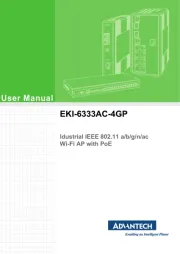
29 Juli 2025
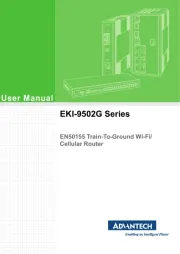
29 Juli 2025

29 Juli 2025
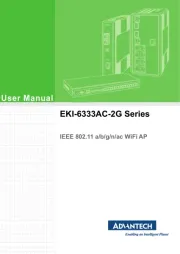
29 Juli 2025
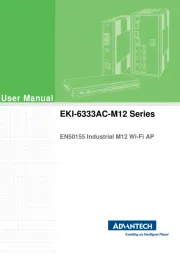
29 Juli 2025
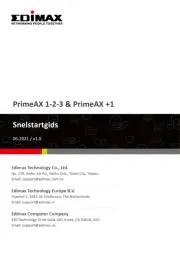
28 Juli 2025
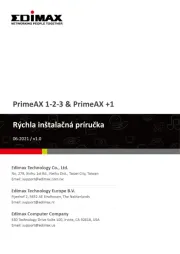
28 Juli 2025
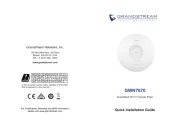
15 Juli 2025

14 Juli 2025

14 Juli 2025